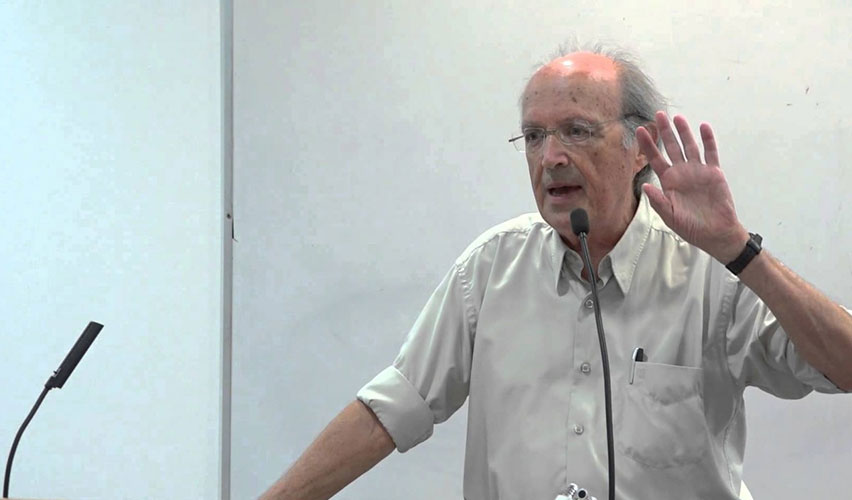The Article was originally written for the Rosa Luxemburg Foundation in Israel.
Shlomo Swirski, Academic Director, The Adva Center
Israel, established in 1948 and with a population of 8.13 million (2015), belongs to the self-defined group of developed countries. In 2010 it was accepted into the OECD – the Organization for Economic Cooperation and Development, the prestigious “rich countries’ club.” With a GDP per capita of $33,200 (based on Purchasing Power Parities [PPP]) in 2014, it ranked 22nd out of 34 OECD members (Germany, with $44,800, ranked 10th). It ranked even higher – 19th out of 187 countries (in 2013; Germany ranked 6th) — on the United Nations Human Development Index, which takes into account not only economic performance but also performance in the fields of health, education and gender equality.
Israel has advanced technological industries and services, which gained it the image of Start-Up Nation, to use the title of Dan Senor and Saul Singer’s best-selling book. Most major information technology multinationals have research and development centers in Israel; half of Israel’s industrial and service exports are high tech related; Israel pioneered the production of drones and has civilian and military satellites circling Earth; in 2015 it had two universities in the top 100 ARWU (“Shanghai”) ranking (Germany had 4); 2 more in the top 200, and 2 more in the top 400.
Yet the Israeli economy fails to produce jobs with decent pay for a large number of Israelis: close to 20% of Israeli households are below the poverty line (50% of median income); around 30% of workers earn the minimum wage or less; and 70% of employed persons earn an income that is equal or less than the average wage — the one income statistic announced monthly in Israel, possibly on the assumption that it is representative. Investments hardly reach areas an hour’s drive from Tel Aviv; and the Palestinians who became citizens of Israel in 1948 hardly ever figure in governmental economic development plans.
How can we explain these apparently contradictory indicators? How do they fit the history of a country in which for years the state controlled most major capital flows; a country in which the state owned major infrastructural and industrial corporations; a country in which the Histadrut, the federation of labor unions, not only organized most workers – achieving one of the world’s highest rates of unionization – but also owned some of the largest corporations, the largest bank and most pension funds; a country whose symbols included the communal kibbutz and the cooperative moshav?
To start with, hi tech industries and services do not represent the nation as a whole, as they employ no more than 8% of the Israeli civilian work force. Furthermore, most of those industries are located in the center of the country, in and around Tel Aviv. They employ mostly men (65%), graduates of the best high schools, prestigious military units and top universities. A lucky few can earn millions of dollars, if and when they manage to sell their product to US giants; but regular work is also well remunerated: average hi tech salaries are twice the Israeli average wage. The actual sum is lower than the equivalent pay in the US Silicon Valley, but enough to place a family with two earners each making a similar sum in the upper decile of the Israeli household income scale.
The Israeli hi tech is to a large degree a club of its own within the Israeli economy; most Israelis would find it hard to gain entry. But high tech is not exceptional in so far as concentration of resources and privilege are concerned. To start with the ownership structure, a huge slice of economic activity in Israel is controlled by a relatively small number of capitalists. A government commission on competitiveness in the Israeli economy noted that the Israeli economy is characterized by a concentrated ownership structure, with a large portion of public companies controlled by a limited number of business pyramids. It also found that the majority of the top 100 companies listed on the Tel Aviv Stock Exchange are controlled by 23 business groups. Though the phenomenon of business groups is not unique to Israel, a Bank of Israel report found that the ten largest groups’ segment of the market – 30% — consists of one of the highest concentrations in the western world.
Concentration of control and of wealth is to a large extent the long-term result of a neo-liberal turn of the Israeli economy dating back to 1985.
During the first three decades after its establishment in 1948, the state in Israel led a developmental agenda, whereby it controlled capital flows, directed investments, orchestrated rapid industrialization, developed infrastructure and housing, and aimed for full employment. During much of that period, average annual GDP growth was close to 10%.
The developmental agenda, which Israel shared with many other countries at that time, experienced crisis in the late 1970s and early 1980s, due primarily to very high military expenditures following the 1967 war, and even higher expenditures after the 1973 war. In the face of run-away inflation, a coalition government headed by the centrist Labor party and the rightist Likud party adopted in 1985 a neo-liberal agenda then promoted by the major international financial institutions.
The new agenda called for curbing state expenditures in order to “free resources” for business; this involved privatization of major state and Histadrut corporations; restraining salaries, especially in state employment, among other things by opting for indirect employment that is, employment through contractors and manpower agencies, which reduces the costs of employees’ compensation; and relegating the Histadrut, once a powerful partner in a tri-partite state-unions-business corporatist structure, to the sidelines of macro-economic policy making.
Business credit, formerly controlled by the state and the Histadrut, was now handled by an oligopoly of commercial banks. Pension funds, formerly controlled by the Histadrut and used to fund both state and Histadrut developmental projects, were privatized and sold to commercial insurance companies. The Bank of Israel, for years an important partner and facilitator of state-developmental policy, was declared “independent” and de-linked from state-led projects. Needless to say, the few major banks and insurance companies that now control credit are owned by some of the major family business groups and serve their interests.
The new macro-economic agenda was gradually instituted under the promise of increased investments and economic growth, yet the results left most Israelis wanting: Israel, a country with a long history of high investments, now ranks below the OECD average. Not only that, while the state and the Histadrut once made an effort to distribute investments throughout the country, now business investments are concentrated in the center of the country and in few industries – high tech, finance, and real estate. The Tel Aviv and the Central districts attract the bulk of new investments; the North of the country and the South, and even the Jerusalem district, receive much less. In addition, a significant portion of the credit at the disposal of the business sector is channeled abroad.
The down-sizing of the state, as seen through fiscal lenses, was quite successful. The Israeli budget was reduced from 56.1% of GDP in 1988 to 39.3% in 2014. In 2013, Israel’s government (including municipalities and social security) expenditures, at 41.3% of GDP, were lower than the OECD average (Germany – 44.3%). On the other hand, the Israeli government could boast to international credit raters a downsized public debt (including municipalities): while up to the mid-1990s, the national debt stood at more than 100% of GDP, by 2014 it had been reduced to 67.5%.
Down-sized state projects and down-sized state budgets require lower tax revenues. With half the population earning less than the income tax threshold and thus absolved from payment, tax cuts quite simply benefitted the other half, but especially the top income decile and the corporate elite. In 2012, income from direct taxes in Israel was lower than the OECD average. Income from indirect taxes, and particularly Value Added Tax — which are less progressive than direct taxes – was higher than the OECD average. This means, of course, that the burden on low-income Israelis is proportionally heavier than on those with high incomes.
Lower taxes and lower budgets mean, among other things, lower expenditures on social services. Given that Israel’s military budget is comparatively very high, at about 7%-8% of GDP (Germany and most Western Europe countries – between 1% and 2%), expenditure on social services is comparatively low. In 2013, for example, Israel’s expenditure on the social safety network was the lowest among OECD countries – 15.3% of GDP compared to an OECD average of 21.9% of GDP (and 26.2% in Germany).[1]
Concomitant with these developments, Israeli workers have been losing their collective bargaining power. Union membership, which stood at 70% in the 1950s and 1960s, is down to 25%-30%. The Histadrut, once one of the strongest labor federations in the world, was shorn of its power: it sold most of the firms it once owned, including the largest bank, Hapoalim, and the single largest industrial conglomerate, Kur. It lost control over Israel’s largest HMO (Health Maintenance Organization) – once the Histadrut’s largest source of income, as HMO membership fees were passed on to the Histadrut. It also lost its pension funds. The Histadrut now represents a relatively small number of strong unions, mainly in the public sector.
With a much debilitated bargaining power, Israeli workers’ share of the national income has been steadily shrinking. Over the past decade or so, while the employers’ share grew from a low of 8% in 2002, at the height of the economic crisis brought on by the second Palestinian intifada, to 18% in 2014; during at the same time, the workers’ share contracted from 67% to 57% (the rest being taxes).
One major result of de-unionization and of the shrinking of workers’ share of national income has been the shrinking of the Israeli middle class, which, like in most Western societies, was the main benefactor of state-led developmentalism through state employment and state services. In 1988 it comprised a not very high in itself 33% of households headed by an employed person; by 2010 its composition had shrunk to 26%. The measure used was households earning between 75% and 125% of median household income. Using a wider definition – 75% to 150% — a study by Prof. Steven Pressman found that in 2005, only 36.0% of Israeli households, compared to around 60% in the Scandinavian countries and 52.1% in Germany (2004), could be classified as middle class. Given that wages have largely stagnated since, it is reasonable to assume that no expansion of the middle class has taken place.
At the lower end of the income scale, the proportion of families living below the poverty line, which stood at a high-in-itself 10%-12% in the 1980s, rose to a very high 19%-20% in recent years, due to both worsening conditions in the labor market and cuts in social security and social assistance allowances.
Most low-wage earners are female. Nationally, their monthly salaries are about 68% those of males and their hourly wages 85% those of males. Women are over-represented among earners of what the OECD defines as low wages – two-thirds of the median wage. Most working-age Palestinian women who are citizens of Israel do not work at all, as work can be found mostly in faraway Jewish towns and cities, to which public transportation is infrequent .
Income and wealth have been concentrating at the top. At the very topare to be found, of course, the owners of the major corporations. One decade after 1985, Merrill Lynch began including Israel in its international list of millionaires and billionaires. The Boston Consulting Group and UBS followed suit. In 2003, the Israeli business paper The Marker began keeping track of the Israeli super rich, those whose financial assets are valued at $1 billion and more: in 2003 there were 8 such Israelis and their collective worth stood at $37 billion; by 2015 their number had grown to 84 and their combined worth stood at $140 billion.
The new business elite, in turn, created a highly remunerated managerial class. In 2012, the average cost of the CEOs of the top 100 corporations traded on the Tel Aviv Stock Exchange was 42 times the average wage and 87 times the minimum wage of Israelis.[2]
Compared to most post-WWII European societies, Israeli society is highly heterogeneous. Given our focus on Israel’s economy, one simple way of approaching this issue is by looking at the salaries of the three major ethnic groups: Ashkenazi Jews – those hailing from Europe and America; Mizrahi Jews, those hailing from Arab and Muslim countries; and Palestinians who are citizens of Israel (as distinguished from those residing in the occupied territories and those who in 1948-1949 found refuge in Arab countries). In 2013, second-generation Ashkenazi wage earners (Israeli-born children of fathers who had come from Europe or America) earned about 33% more than the average wage; second- generation Mizrahi Jews earned about 10% more than the average wage, while Palestinian Israelis earned 33% less than the average wage.
In 1948, the vast majority of the 600,000-strong Jewish community consisted of European Jews, presently sharing the collective appellation Ashkenazi (Ashkenaz being the Hebrew name of Germanic territories of the middle ages, from whence many migrated to Poland and Russia). Most hailed from Eastern Europe, the popular base of Zionism; another sizeable contingent came from Western Europe, mainly from Germany, after Hitler assumed power. Within one decade after the war of 1948, approximately 900,000 Jewish immigrants had arrived in Israel, about 45% of them Holocaust survivors from Europe and some 55% Jews from Arab countries.
The adjustment of the Jews from Arab lands was generally problematic. Most families spent many years in transitory camps, whence they were eventually settled in peripheral areas of the country, where they suffered high levels of unemployment throughout the 1950s. It was only when Israel embarked on a course of rapid industrialization that they were finally “absorbed,” at the cost of collective proletarization. All of which served to cement an enduring social, economic and cultural cleavage between Ashkenazi and Mizrahi Jews, the latter appellation reflecting the common fate experienced by communities as disparate as those of Moroccan, Iraqi and Yemenite origin.
The year 1948 created another line of cleavage, between Jews and Arabs. While some 600,000 to 700,000 Palestinians residing in areas that became part of Israel fled or were expelled, thus giving rise to the Palestinian refugee problem, some 150,000 remained within the borders of Israel. Palestinians who are citizens of Israel now number 1.7 million (2013). Israel’s Palestinian citizens fared poorly, compared to Jewish citizens: for two decades, up to 1966, they were under military administration that restricted their movements. Most of their lands were confiscated and given over to Jewish villages, towns and development projects, transforming the mostly peasant Palestinian community into hired hands. Palestinian citizens of Israel find themselves at the bottom on almost all social and economic indicators.
To these three groups we need to add large numbers of non-Israelis in the labor market. Starting in 1967, Palestinians from the occupied territories began commuting to Israeli agricultural settlements and urban construction sites. During the first Palestinian intifada, when the entry of Palestinians from the occupied territories was restricted, the government allowed them to be replaced with workers from other countries. The doors, once opened, would remain open for an unending stream of non-Israeli workers – presently estimated at around 300,000. Thais are working the fields of collective and cooperative farms, Romanians and Chinese are working on construction sites, Philippino women are tending elderly Israelis, and Africans work in restaurants and hotels. None of the non-Israeli workers is protected by Israeli unions – although most labor laws and some of the collective labor agreements are supposed to apply to them, but are not enforced.
Although most Israeli economists would not bring this up, the fact is that the Israeli economy is deeply affected by the ongoing conflict with the Palestinians and the Israeli occupation of the Palestinian lands conquered in 1967. While most other countries’ economies are vulnerable to global economic crises, such as that which erupted in 2007-08 and plunged growth in Israel from 4.1% in 2007 to 1.1% in 2008, Israel is additionally vulnerable to the effects of violent confrontations such as the second intifada, which plummeted the Israeli economy into two consecutive years of negative GDP growth and three consecutive years of negative growth in GDP per capita.
There are many aspects to the economy of the conflict and of the continued occupation. On the one hand, many Israeli businesses, most prominently the military industry, profit, as many of its products gain from the expertise, experience, and prestige accrued as a result of IDF clashes with the Palestinians (military exports amount to roughly 10% of total exports of goods). So do security-service providers, such as contractors erecting the Separation Barrier. But such profits are dwarfed by the damage wrought to the Israeli economy as a whole due to the contraction of economic activity during times of conflict. To cite just one recent example: for one full year after the July 2014 Israeli bombing of the Gaza Strip, tourism to Israel was in crisis. And such confrontations are highly frequent. Thus the lack of a political accommodation is a continuous potential threat to the Israeli economy.
Another economic aspect of the occupation is the heavy fiscal cost of the Jewish settlements in Palestinian territories. Ideology is a matter of geography, and in our case, the free market ideology instituted in 1985 stops at the Green Line. On the other side of the line, all Israeli governments have made heavy fiscal contributions to the settlements project – whether in the form of civilian expenditures, including high subsidization of municipal budgets, or military expenditures, including a heavy presence on the ground of all branches of the military and security services.
To sum up, the Israeli economy needs to go through a significant transformation. Let me mention just three elements of such a transformation:
One is termination of Israeli occupation of Palestinian lands and of Israel’s almost total control of the Palestinian economy, opening the door to a regional agreement that would allow, on the one hand, downsizing regional military expenditures and on the other hand, economic growth for Palestine and for the region as a whole. Such an agreement would also facilitate greater integration of Palestinians who are citizens of Israel into the Israeli economy.
A second is public control of business credit, so that investments go to the entire country and not just to its privileged center and so that they provide for decent wages, for unionization and for non-discriminatory employment.
The third is a dramatic re-investment in public services such as education, health, housing and welfare, so as to provide for better educational and social opportunities for the majority of the population. Such a move would involve abandoning the ideology that sees the national budget as a constant target for cuts, so as to satisfy multinational financial interests, viewing it instead as an instrument for the improvement of the lot of the entire population.
Ram, Uri. 2007. The Globalization of Israel. New York: Routledge.
Shafir, Gershon, and Yoav Peled. 2002. Being Israeli: The Dynamics of Multiple Citizenship. Cambridge: Cambridge University Press. (2002)
Shlomo Swirski, Ph.D., presently the academic director of the Adva Center, is one of Israel’s leading sociologists and social activists. In the 1970s he led a new departure in Israeli academic sociology, with a series of analyses of Israeli ethnic and class relations and was one of the founders of Critical Research Notebooks, a social science journal devoted to a critical reassessment of social and economic policies. In the early 1980s he published a path-breaking class analysis of the relations between Mizrahi and Ashkenazi Jews. In 1991 he was one of the founders of the Adva Center, an action-oriented academic institute dedicated to monitoring equality and social justice in Israel. In the context of the Adva Center, Shlomo Swirski has produced pioneering analyses of Israel’s political economy, among them the social ramifications of the budget process, the privatization of public services, and the internal – economic, social, military, and political – costs of Israel’s continued occupation of the Palestinian lands.
[1] OECD, National Accounts Database, OECD StatExtracts, http://stats.oecd.org/Index.aspx?datasetcode=SOCX-AGG
[2] Gaps in Germany are larger – average CEO pay was 147 times the average worker’s salary and in the US much larger – 354 times. See Ryan Derousseau, “Why do American CEOs make twice as much as German CEOS. Fortune, November 4, 2014.







Leave A Comment